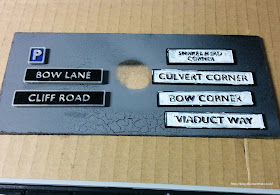To get the first curve I subdivided a plane and moved the vertices to line up with a circle in each of the directions I wanted the corner.
To get the curve round the corner to be a larger curve than the others I added a circle and simply scaled each row of vertices in just one direction until the edge vertex lined up with the view of the edge of the circle.
The other vertices scaled neatly to keep a smooth complex curve. In the above example I scaled [S] and restricted it to the Y axis [Y] which is the direction of the green arrow in the above image.
It was the fact of scaling rather than moving that kept the curve in the other direction looking smooth.
I started from the top and always scaled to the centre line of the guide circle. I just selected the upper most vertex as the last selection and scaled towards that.
It's much harder to describe than it was to do.
==



















































